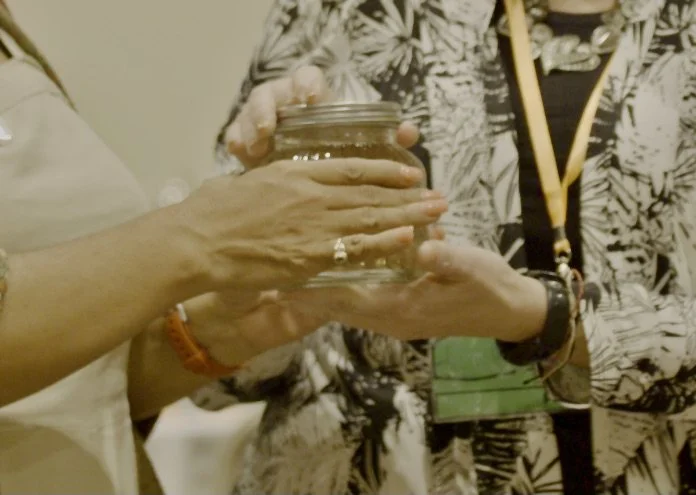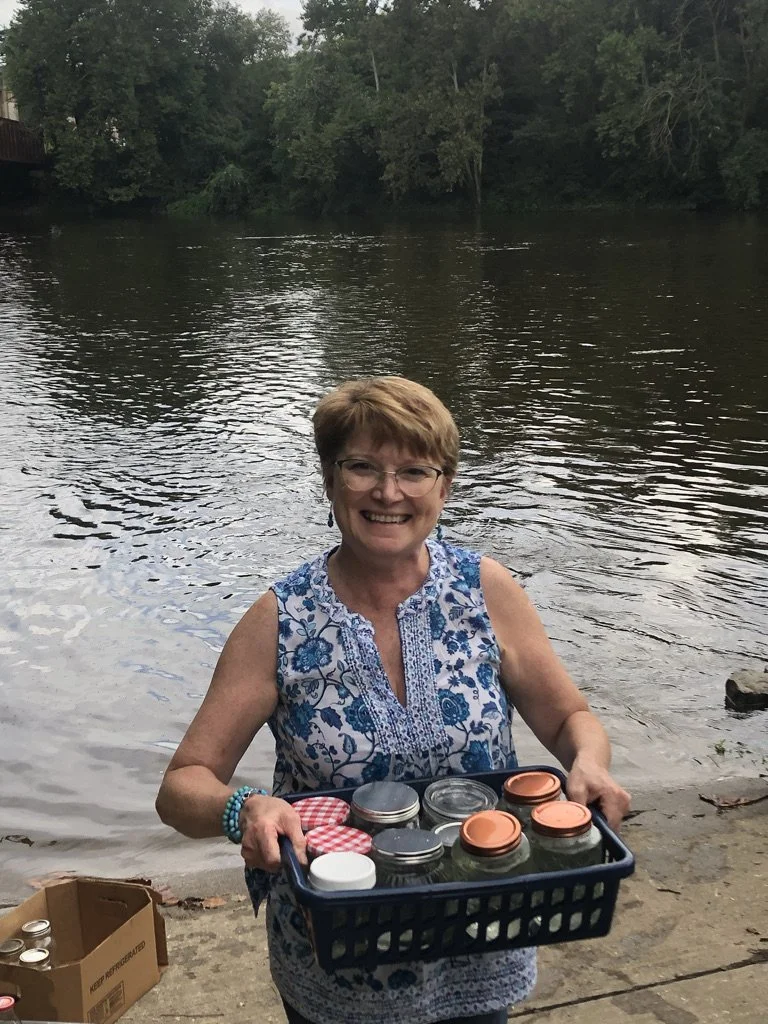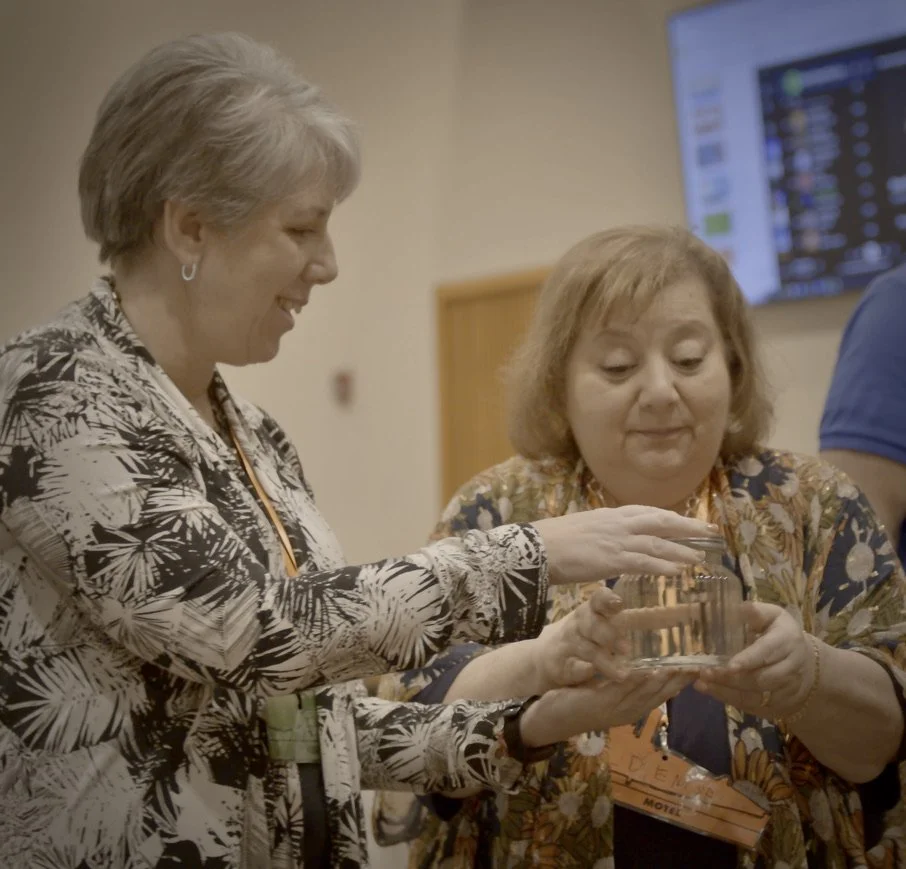The Most Beautiful Lehigh Valley… Maybe: A Future Forum
What if by 2050 no one in the Lehigh Valley was unhoused? What would it look like?
…what would it take to get there?
Photo by Jacob Metzger
During a yearlong residency with Touchstone Theater, Mark-n-Sparks co-hosted a series of conversations, workshops, and interviews, plus a production of The Most Beautiful Home… Maybe in Bethlehem, PA. As we listened deeply during our extended engagement, the local housing challenges came sharply into focus:
Increasing rent
Gentrification (predominantly caused by college students, university development, and out-of-town corporate landlords)
Housing shortages
Zoning limitations
Population growth and changing demographics
Fragmented housing conversations
Lack of collective long-term vision
We know these issues aren’t unique to Bethlehem. As artists we don’t have a magic wand to rezone neighborhoods or the financial resources to build housing.
What we can do as artists:
connect Siloed conversations & help people vision
So on September 13, 2023, we co-hosted The Most Beautiful Lehigh Valley… Maybe: A Future Forum (TMBLVM) in partnership with Community Action Lehigh Valley, Lehigh Conference of Churches, Lehigh University College of Health, Touchstone Theatre, and DeSales University.
Future Forum Goals:
As artist-facilitators, we keep two sets of goals in mind when designing the POP (purpose, outcomes, process) for a gathering. We developed both sets of goals in collaboration with our planning team.
External goals that are shared with all attendees.
Internal goals that we explicitly name but don’t share widely.
The External Goals for TMBLVM: A Future Forum:
Relationships: Build relationships between stakeholders from health, climate, energy, housing, government, arts, and faith communities.
Vision: Create a collective daydream for 2050, where we successfully address the housing issues of the Lehigh Valley.
Values: Identify shared regional values that may inform community development.
Policy: Learn about and surface connections between policies and data that can support a range of housing solutions for the Lehigh Valley.
Coordination: Surface opportunities for civic engagement, communication, and coordination across housing conversations in the Lehigh Valley.
The Internal Goals were specific to the Future Forum tone:
Include art-making, story, and humor in policy conversations.
Hear from different perspectives and a variety of experts.
Have the process of creating the agenda for the gathering be restorative for the planners.
Link individual personal experiences to systemic issues.
The planning team consisted of: Sara Satullo (Deputy Director of Community Development, City of Bethlehem), Anna Smith (Director, Community Action Lehigh Valley), Sara Vigniri (Professor and Journalist / Founder of Allentown Voice), Abby Goldfarb (Executive Director, Lehigh Conference of Churches Jan Cohen-Cruz (Author), Mary Wright (Ensemble Member, Touchstone Theatre), Kate Jackson (Professor, College of Health, Lehigh University), and ashley sparks (Co-Director, Mark-n-Sparks).
Siloed Housing Conversations
As community leaders, the people on the planning team were deeply aware of the impact of limited coordination has across the Valley. They created an invite list of 200+ people from across the Lehigh Valley’s three cities, two counties, and 60+ municipalities. They prioritized relationship building and connectivity between people that work in the day-to-day of housing policy and issues - but aren’t regularly in the room together. The result was a mix of staff from direct service providers, advocates, educators, and municipal workers.
We wanted to invite people who are being directly impacted by the housing crisis. As this event was during the work day, we knew many community members wouldn’t be available. However, the reality is that some housing staffers are also dealing with a lack of affordable rental options, and homeownership is out of reach for many. This became clear during a cultural mapping exercise. When asked, “How long have you lived in your current home?” a staff member from Community Action Lehigh Valley shared her personal story about moving twice in the last two years.
Over 70 people from across sectors and local geographies attended the forum. By the end of the day, all of them said they had built a new relationship, and the majority said they had people with whom they wanted to follow up. In the absence of a coordinated regional housing coalition, people were curious about how to stay in deeper coordination.
Connections
A university staffer focused on student housing spoke with a representative of a service agency that works with displaced residents. It wasn’t a comfortable moment. But it was a moment for the advocate to share a perspective that the university staffer doesn’t hear because their day-to-day is focused on student needs.
A congressional staffer sat with a local developer who was wondering how he and the landlords he works with could be more proactive in addressing the situation. In the words of Touchstone Theatre’s Mary Wright, “The staffer connected the developer with the Lehigh Valley Regional Homeless Advisory Board and he has now started his own group of landlords from across the Valley who are interested in figuring out ways they can work together to create more affordable rental rates that they can sustain financially.”
There were members of the planning committee that hadn’t met until we started this process. One of the things we are able to do as artists is create an excuse to get people together. Our work speeds up the relationship building process because while people are collaborating on a “low-stakes” community engagement event, they are getting to know each other at the same time.
A long range vision: 2050
“We don’t ever live in the present. We live in someone else’s future.”
The building you are in right now, was someone’s design and idea for the future. By extension, the people in that room were dreaming about the infrastructure that someone born in 2050 will be living with.
By 2050, the Lehigh Valley’s population will increase by 100,000. “The equivalent of adding another City of Bethlehem and another City of Easton to the area,” Becky Bradley, Executive Director, Lehigh Valley Planning Commission. Where will these new neighbors live when there is currently a shortage of rental, affordable, and middle housing? What housing infrastructure is needed to accommodate this growth?
In a room full of pragmatists, visioning and daydream must be grounded in data. For us the Future Forum, wasn’t focused on creating utopian visions but rather ideating and visioning solutions that could address the approaching reality:
100,000ish more people by 2050
32% will be 55+
30% increase in the needs for Home Health Aides
20% of the population will speak English as a second language
Our values inform our vision and what we imagine and hope is possible. Our infrastructure literally reflects our values, so let’s be explicit about what values are espoused and practiced. Through personal stories we surfaced the collective values of the Lehigh Valley. The answers varied from tradition, hard-work, community, family, “holding open the door at the WaWa”, welcoming to newcomers, not welcoming to newcomers, historical legacy.
Through guided visualization participants took a few minutes to imagine a 2050 where the Lehigh Valley successfully housed everyone. They shared their individual visions with a small group and then discussed the policy implications for creating this vision. They shared differing ideas, opinions and concerns about how they would get there as a community. It got juicy. Our values influence our policies and daydreams. How will a community that values tradition navigate the growth on the horizon?
The River Connects Us
With each of the questions we asked, attendees were writing their answers down on collage paper. These scraps were collected to form a mural representative of the Lehigh River.
The weekend prior, Mary Wright and I had gathered water from the Lehigh River. As we gathered water, Mary and I talked about longevity, family, and connection to place. We imagined the people of 2050 that may gather at this river. The river water was collected into a hodgepodge of donated glass jars from the pantries, basements, and garages of the planning committee. Some of the jars clearly had sentimental value - “left over from my daughter’s wedding”, others aesthetic value - “how cute is this yogurt jar!?!”
At the end of the Future Forum, standing in a large circle, we handed out the water jars. A token to remind people about their connection to the water of the Lehigh Valley. A gift to say “thank you for spending the day with us.”
We passed the water like communion down the line. And then the water stopped moving. It was stuck. An individual needed to choose. They wanted to choose their river water jar, rather than wait for chance to gift them. Fifty people waited for their water to come. Graciously and with humor, but it was also the end of the day. We couldn’t move forward together until everyone had their water jar.
And somehow this moment felt like a “tell”. Is this actually the value of this place? Will my personal preference create a river dam? Am I willing to let go of a cute glass yogurt jar filled with river water to contribute to the forward movement of the group? Will the Lehigh Valley be able to move forward in collaboration and coalition or will the individual municipality, city, and county needs hinder the ability to build momentum? I ask these questions from a place of deep curiosity about what it takes to create community-wide change.
The Future is next week.
This forum created a really good “first-date” for many people who are committed to addressing the housing challenges of the Lehigh Valley. Many of them came on a second date to see the production of The Most Beautiful Home…Maybe as part of Touchstone’s Festival Unbound. As these conversations continue and relationships grow perhaps the potential of creating a future of abundant and affordable housing won’t seem like such a daydream.
A Collage-Poem based on attendees visions for the future:
Here you will find
Peace
Safety
Different foods, music and clothing.
Festivities
Here you will find
Development is built for people (not cars)
Green space with a lot of accessible walking paths (trails)
Sustainable communities with lots of plants and animals
Comprehensive and cohesive investment in community by Hospitals, Government, Businesses, and Taxpayers
Here you will find
Houses for older people that encourage healthy living
Children playing free
Diversity and cultural riches
Everything painted in bright, fun colors
Welcome home.
















